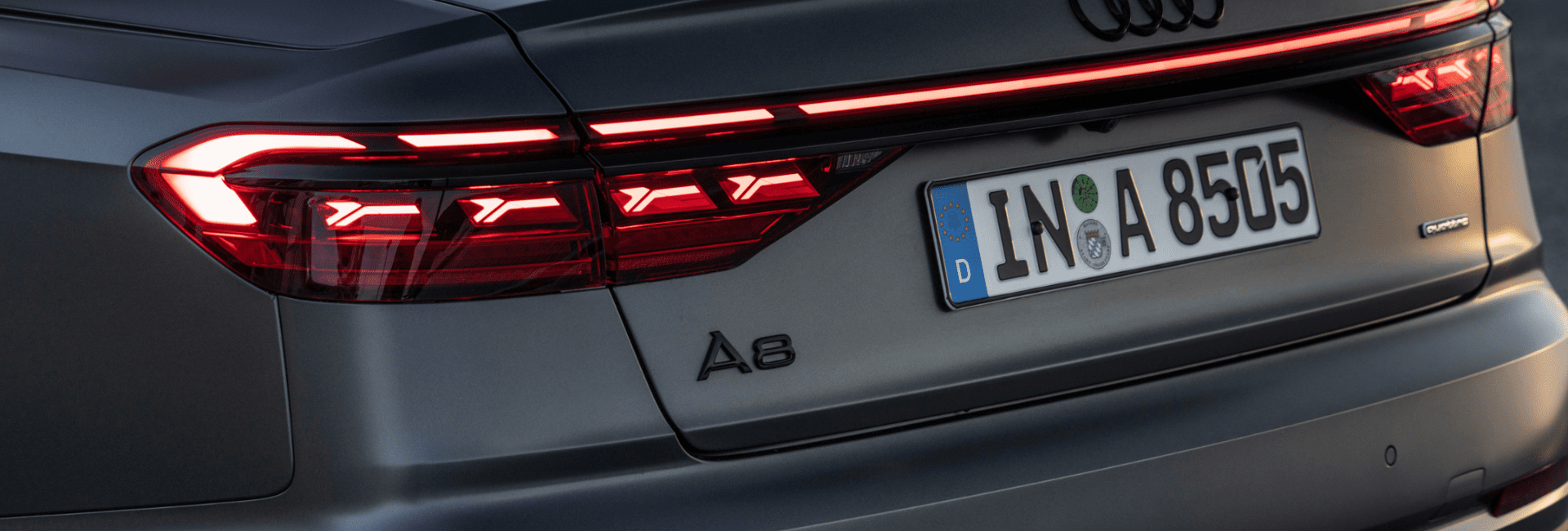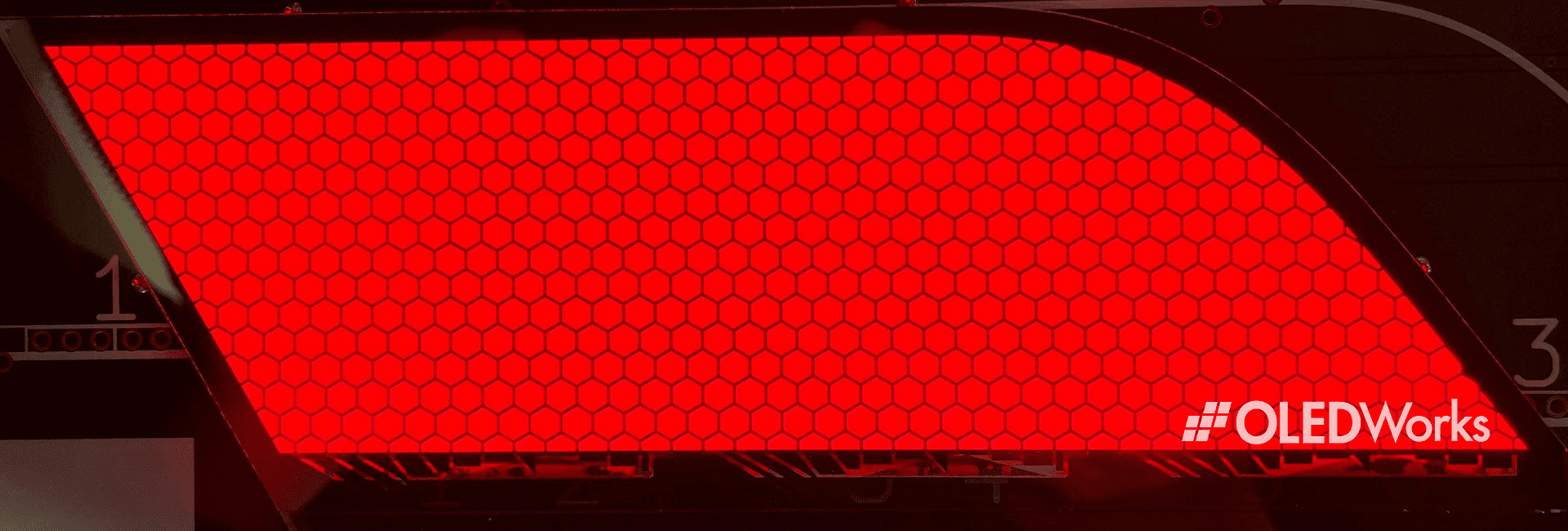
By John Holland, Chief Revenue Officer (CRO)
Part 2: Ambient and Flexible
In Part 1 of this blog, I opined that the success of future automotive lighting solutions will depend on whether the solution is (1) adaptive, (2) ambient, (3) communicable, and (4) flexible. These four characteristics will revolutionize automotive lighting by transforming it from the basic objective of illumination to a state-of-the-art lighting experience, enhancing vehicle aesthetics, design, utility, and safety.
This increased safety will not only benefit the vehicle’s driver and passengers but will also improve the safety of the surrounding drivers, pedestrians, cyclers, and even nearby smart cars with self-driving capabilities.
Part 1 focused on OLED lighting being adaptive and communicable. This part discusses the ambient and flexible nature of OLED lighting, illustrating how it is an ideal solution concerning all four important automotive lighting characteristics.
OLED Lighting is Ambient
OLED lighting in automotive interiors is fast becoming a differentiator because its illumination is naturally ambient. It provides an ambiance that significantly impacts the interior space and overall driver experience, including increased comfort and orientation inside the vehicle during dusk and nighttime driving.
When thinking of automotive lighting, most people’s first thoughts often go to headlamps, advanced taillights, and running lights that create strong branding concepts. While these trends are sure to continue, manufacturers are now focusing on the ambient levels of interior lighting. What started as straightforward light applications has given way to techy backlit displays, occupancy detection, and variations of ambient lighting-based attempts to affect occupant mood, the time of day, and other environmental factors.
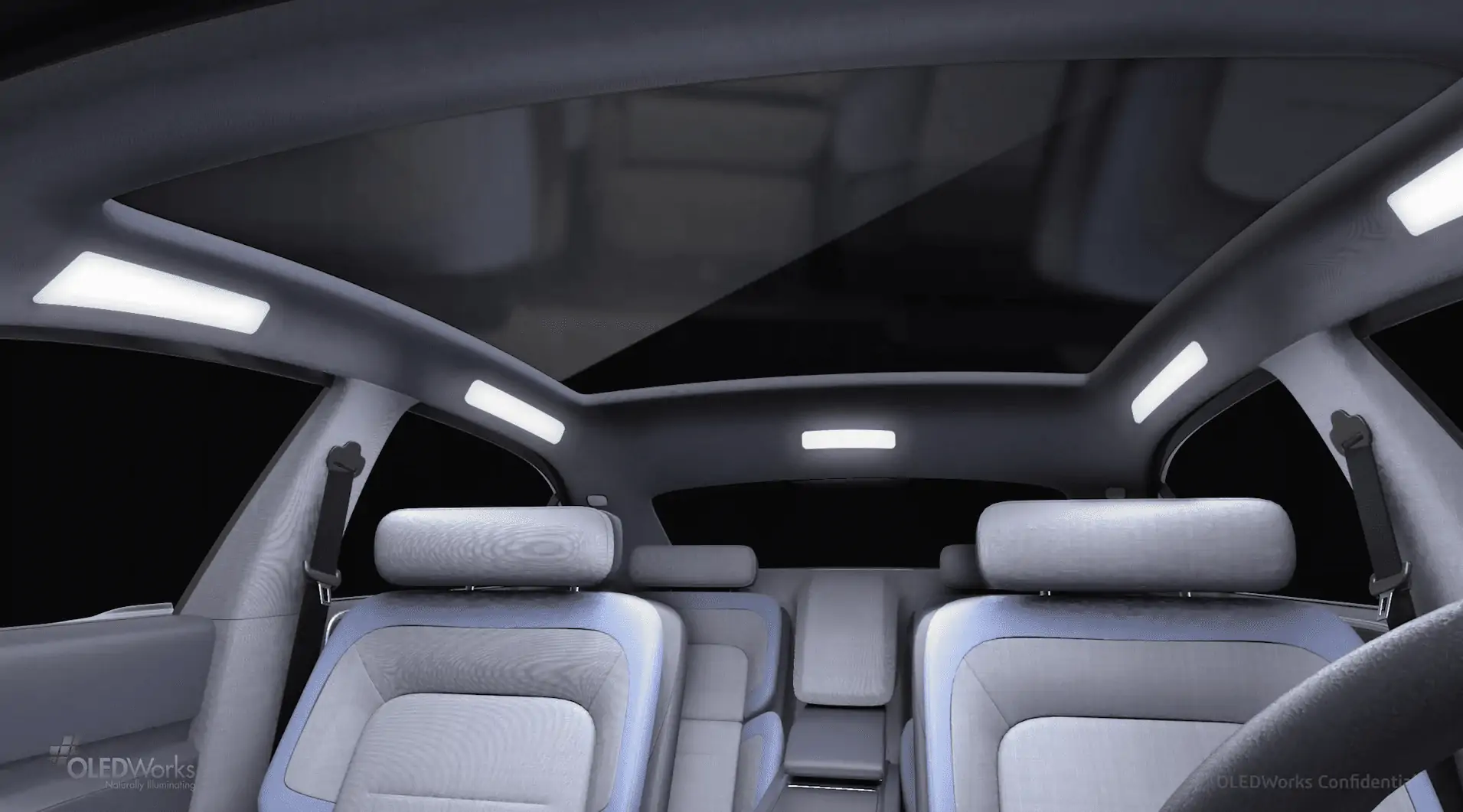
Automotive interior lighting rendering
OLED lighting is perfect for this as it provides/naturally is:
- Homogeneous;
- A diffuse, surface area light source;
- A Lambertian light source rather than a point source;
- Is super high contrast; and a
- High CRI of more than 95.
Indeed, the ambient lighting of today refers more to the indirect interior illumination that gives the driver a sense of orientation and spaciousness as well as feelings of safety, comfort, and sometimes even a sense of luxury. According to automotive manufacturers, proper ambient lighting delivers an emotional atmosphere and connects the exterior and interior lighting conditions, resulting in the driver experiencing decreased levels of driving fatigue.
In the future, an increased combination of functional and emotional aspects of lighting is expected to be extraordinarily important, especially as autonomous driving continues to expand and improve.
Engineers at BMW in Munich, Germany, and researchers from the Lighting Engineering Group at the Ilmenau University of Technology in Ilmenau have proven the value of the ambiance of OLED lighting versus ordinary lighting. Substandard forms of lighting create glare, leading to distractions, driver mistakes, and accidents. OLED, on the other hand, provides a safe and comfortable balance of brightness and reduced glare while:
- Enhancing spatial awareness;
- Minimizing exhaustion;
- Improving the overall experience on the drive;
- Making the vehicle controls easier to use; and, of course,
- Providing a more highly-segmented and visually pleasing result.
OLEDs also provide vast possibilities for ambient in-car lighting to accentuate brand and personality. Effectively ‘flat’ light sources, OLEDs do not need any reflectors, light guides, or other optics, nor do they cast shadows, which makes them extremely efficient and lightweight. As they can be designed in any shape and fitted to a flexible carrier, they provide even greater flexibility than LEDs.
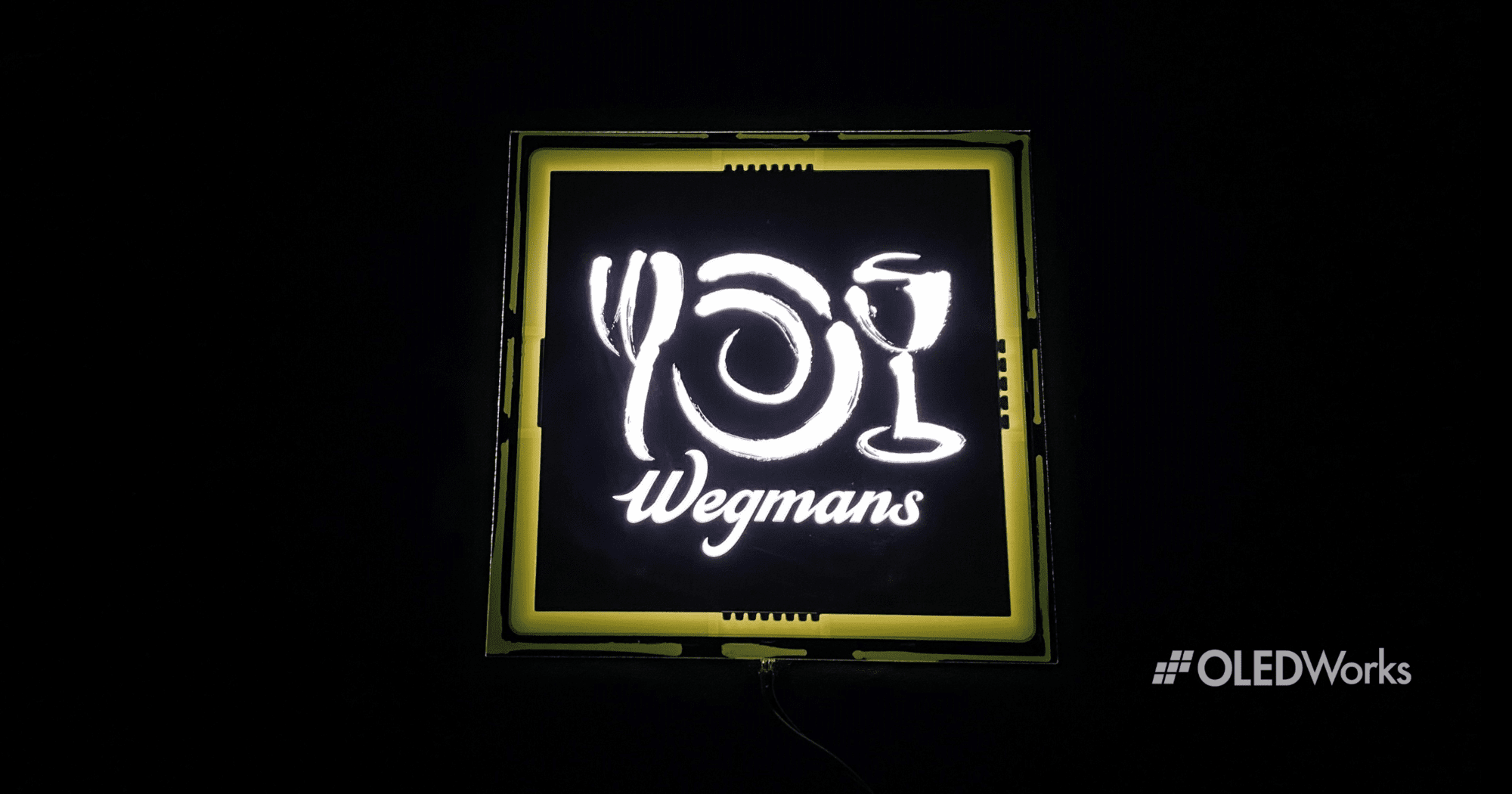
Example of OLED lighting branding capabilities (Logo courtesy of Wegmans Food Markets, Inc.)**
Lastly, OLED lighting technology can also be used in place of LEDs and other light sources when sensors detect a safety issue. For example, if sensors detect driver fatigue or a hazardous situation on the road, certain (indicator and interior) lights in the vehicle could turn on or be changed automatically to alert the driver, but with OLED segmentation and without glare.
With OLED segmentation, there are many options for alerting or notifying the driver, including symbols, shapes, various light concepts, and even interactive options. They also provide a way of showing relevant information during the drive without the need for a separate display.
OLED Lighting is Flexible
Automotive designers are eager to take advantage of all the unique characteristics of OLED lighting. OLED lighting is highly customizable, can project light in ways incandescent and LED lighting cannot, and allows for vastly improved aesthetics through distinctive design and brand differentiation options.
Just think of the future with flexible (sometimes referred to as “bendable”) OLED lighting: a truly amazing light source, now in a new, innovative, flexible glass format. It all started with OLEDWorks’ partnership with Corning by using Corning® Willow® Glass as the OLED substrate:
Bendable OLEDs open many new exciting opportunities for automotive OLED lighting, allowing automotive designers to bend the lighting around the radius of the vehicle’s rear corners. This flexibility provides:
- A significantly wider viewing angle;
- Design freedom, increased safety, and 3D light sculptures;
- Branding capabilities;
- Extraordinarily thin glass at 0.2mm thick;
- The same advanced digital segmentation that was once only available in rigid OLEDs; and
- An ability to integrate the OLED technology into tight spaces.
The 3D options with OLEDs require no additional reflectors or optics to ensure the light can be seen from any viewing angle and has the potential to give car manufacturers a completely new approach to lighting design.
The Future of OLED Lighting – Endless Possibilities
What’s around the corner for bendable OLED solutions? With a current minimum bend radius of 180mm (or about 7 inches), the possibilities are endless. I foresee major OLED-related improvements to:
- Full OLED Rear Combination Lamp (RCL) – Imagine a complete OLED rear lighting system (turn, tail, brake/stop) in a flexible format;
- The number of segments possible, with recent tests showing as many as 1000+ segments in a single panel;
- CHMSL (Center High Mounted Stop Light) – Turn Signal, Indicator Lighting;
- Interior dome lighting;
- Emblem or logo-branded lighting, such as front badge; and
- Exterior and Interior light signatures.
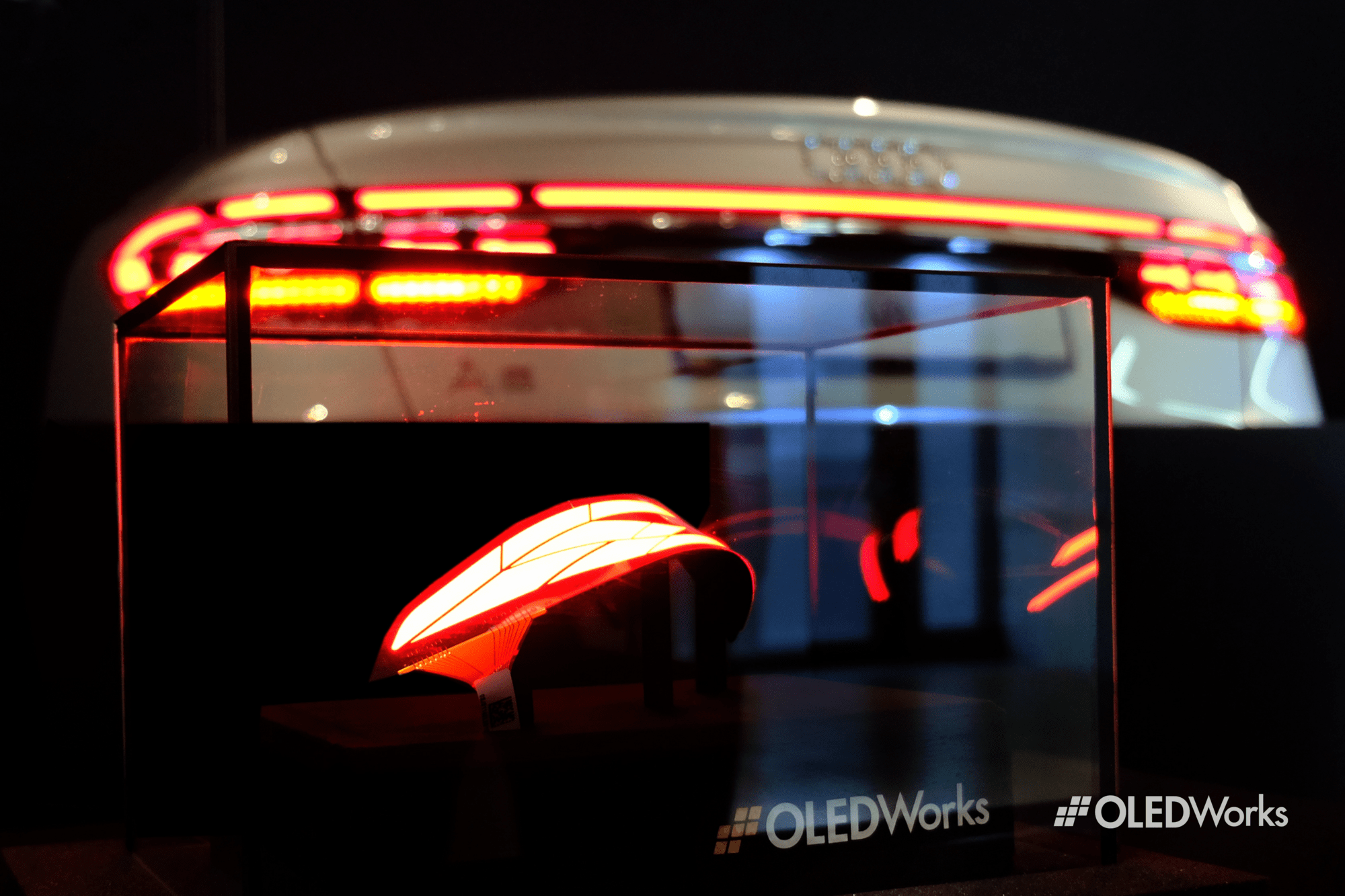
OLED rear lighting and bendable lighting demonstrators
With the addition of innovative technology like OLEDs ready to take center stage with proven reliability and manufacturing, the future of automotive lighting will take us to new frontiers. In the future, as I sit in traffic staring at taillights and badging, I look forward to being treated to some awesome new designs based on OLED. The OLED future is bright — with no glare.
**This article contains an image of an illuminated corporate logo as a demonstration of OLED lighting capabilities. OLEDWorks does not claim a relationship or affiliation with Wegmans Food Markets, Inc.
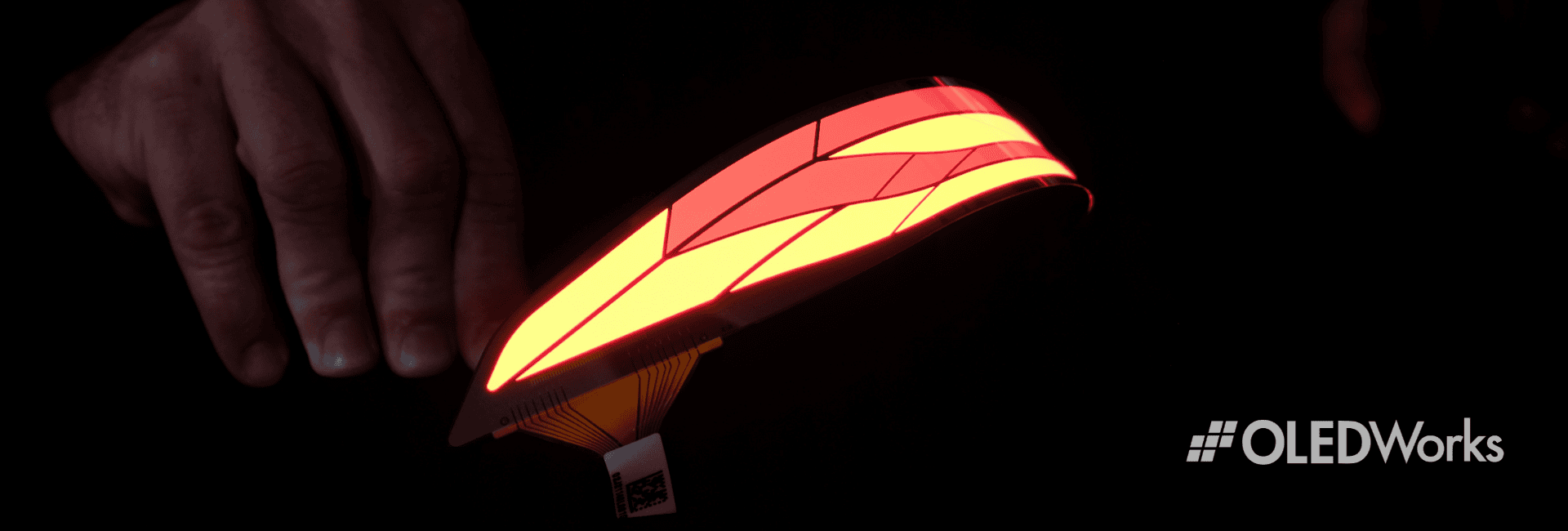

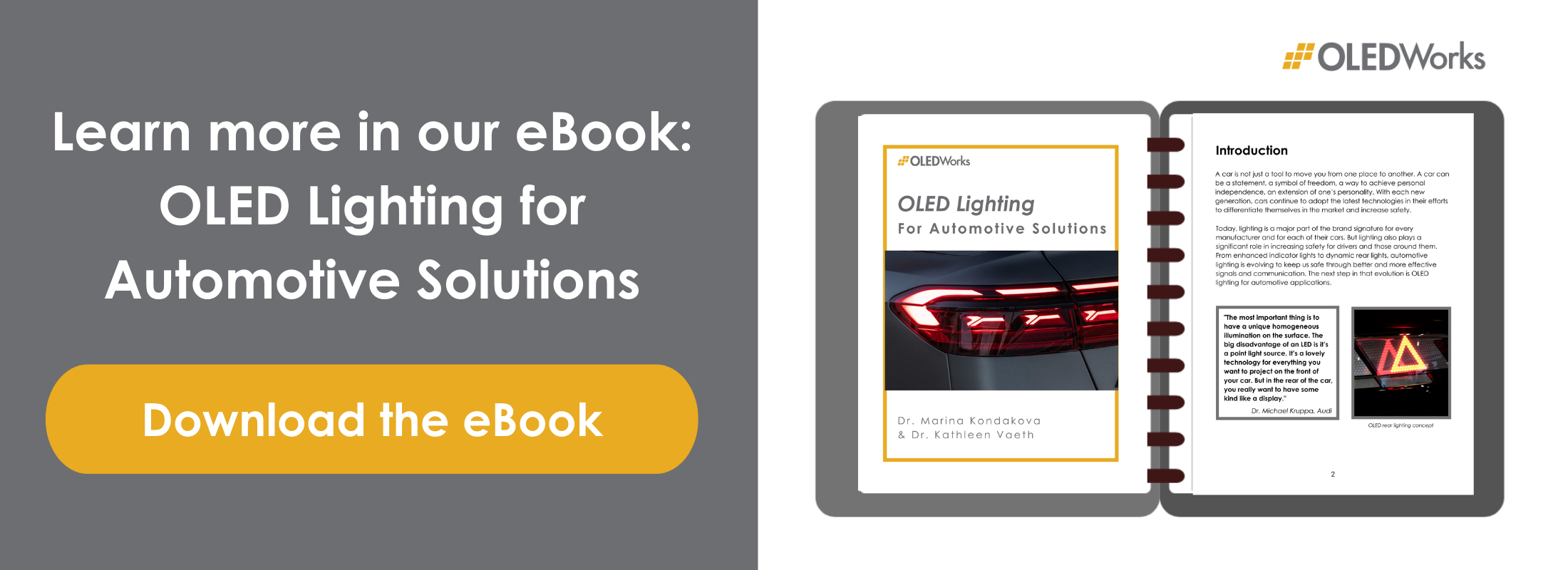
![[eBook] OLED Lighting for Automotive Solutions](https://www.oledworks.com/wp-content/uploads/2022/02/Automotive-eBook-Header.webp)
